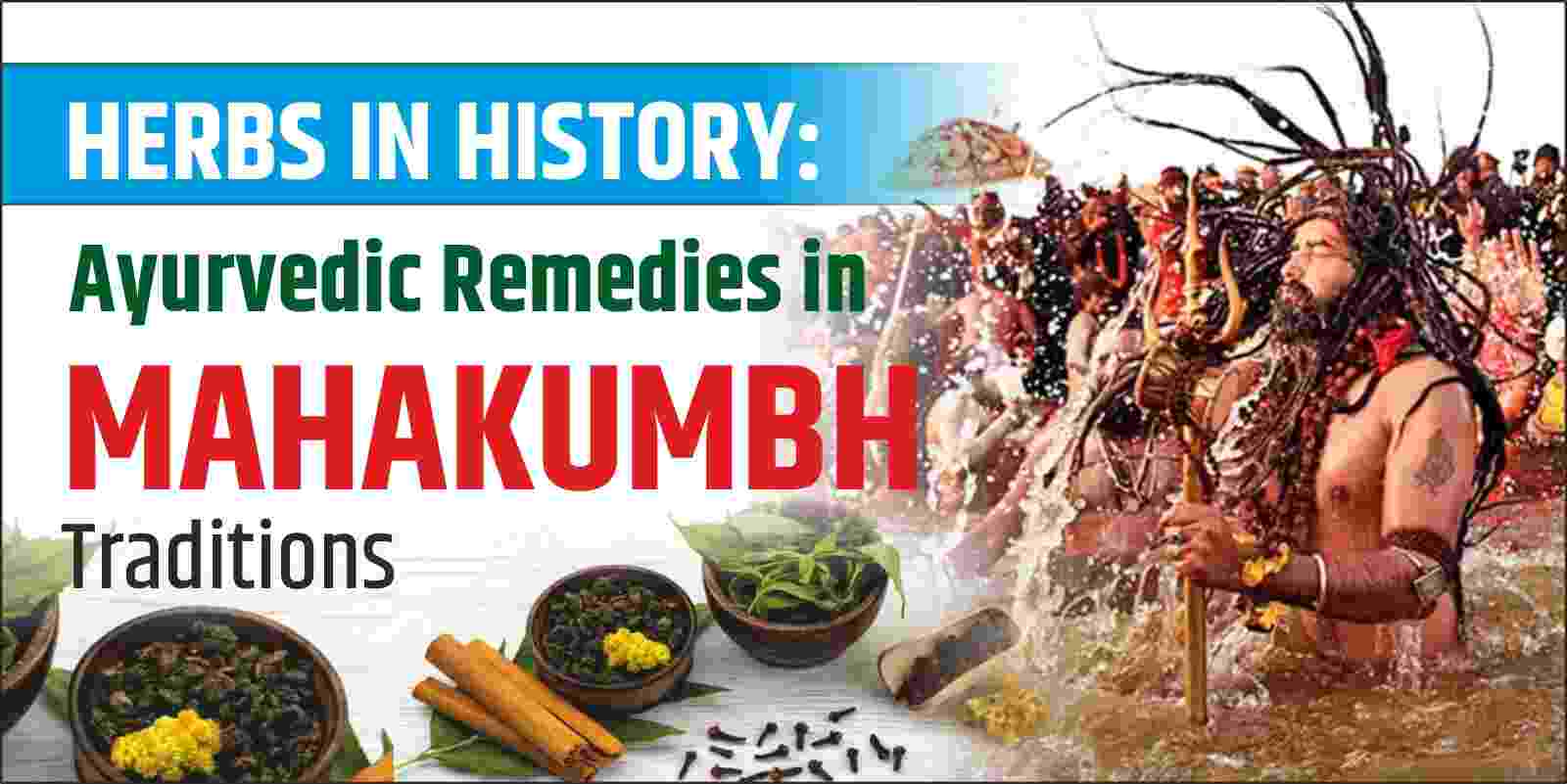
The Mahakumbh Mela touted as the grandest spiritual gathering on Earth, has long been viewed as the epitome of ancient wisdom and healing traditions. Ayurveda, one of the oldest healing sciences in the world, holds a special place in the Mahakumbh traditions, as many of the Mahakumbh traditions are deeply interlinked with Ayurvedic practices. Central to Ayurveda are Ayurvedic herbs, which have been used for centuries to cure diseases, rectify the imbalance between the doshas, etc.
The Mahakumbh has acted as a melting pot for the sages and healers to not only take the holy dip but also discuss ideas and therapeutic procedures that may boost the emotional and physical health of people. The event has long been viewed as an opportunity to disseminate knowledge of the therapeutic properties of herbs growing along riverbanks, forests, and mountainous regions.
Herbs are an integral part of Mahakumbh rituals, with pilgrims using them for physical healing, spiritual purification, and mental clarity. Herbs are often used in offerings, preparing Sattvic meals, etc. at the gathering.
Tulsi is often called the “Elixir of Life” and holds a sacred place in Hinduism as it is often used in prayers. This herb also holds both spiritual and medicinal significance at the Mahakumbh.
Neem has long been known for its detoxifying and antimicrobial properties.
Ashwagandha not only supports stamina and resilience but its excellent adaptogenic properties help the body adapt to changing environmental factors.
A combination of three fruits—Amla, Haritaki, and Bibhitaki—Triphala is widely celebrated as one of the most potent herbs and comes with numerous benefits.
Turmeric, or the “Golden Spice,” is often considered to be the purity and healing for centuries in Ayurveda.
Dipping into the holy waters of the sacred rivers to wash away your sins is one of the most associated images with Mahakumbh. According to Hinduism, herbs like neem, Tulsi, and turmeric purify water. These herbs are added to the holy water to further accentuate their cleansing benefits.
In Hinduism, herbs are also used in the form of incense and oils during ceremonies. Sandalwood, camphor, and frankincense are burned during mantra chants to create a consecrated atmosphere. Oil infused with herbs is also utilized to bless the visitors.
Just like the Mahakumbh continues to inspire millions even in the present times, it is our responsibility to preserve the enduring legacy of Ayurvedic herbs. Protecting biodiversity, disseminating knowledge about the benefits of Ayurveda, etc. assumes importance. For example, Ayurvedic institutes like Karma Ayurveda have made it their mission to make the masses aware of the benefits of Ayurvedic treatment.
Conclusion
The Mahakumbh Mela not only signifies the interconnectedness between nature, spirituality, and health, but it also serves as a reminder of our roots. Ayurvedic herbs, steeped in history and tradition, are instrumental in multiple practices at the Mahakumbh, and Ayurvedic herbs continue to offer holistic well-being that transcends time and boundaries.
"Ayurveda is not just a system of medicine; it's a way of life. Connect with us to embrace a lifestyle that nurtures your body, mind, and soul."

Certificate no- AH-2023-0186
JAN 05,2023-JAN 04,2026